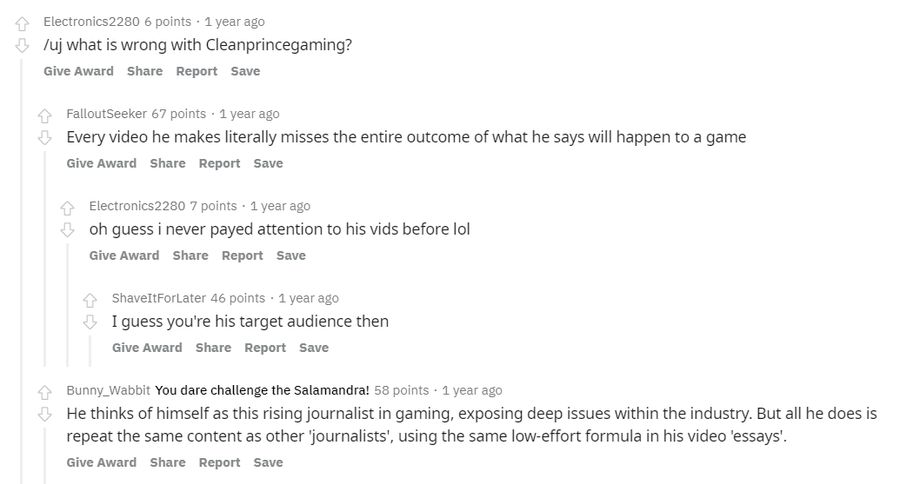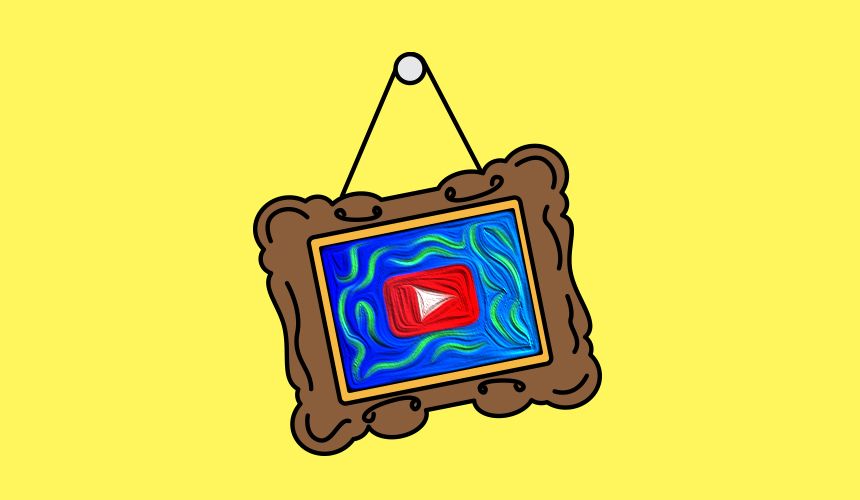The Art of YouTube Criticism
Sarah Z speaks in small dissertations. In explaining her work–dense-yet-accessible YouTube video essays typically between 20 and 40 minutes in length–or in explaining the YouTube landscape, she often formulates thoughts with the same clarity most would need to write and edit to match. “I make analytical videos about various cultural phenomena,” she says over Discord, “from things like movies and TV shows to interesting phenomena such as brand Twitter on social media, what fanfiction of Harry Potter can tell us about how we interpret media–all that interesting stuff.”
Sarah is a 21-year-old university student, a competitive debater (and former two-year president of her school’s debate society), and a Dungeons and Dragons podcast actor. And although her demographic and disposition feel unique of someone who does what she does, what she does–make videos examining media–predates YouTube itself.
The Angry Video Game Nerd, a character/pseudonym of filmmaker James Rolfe’s creation and perhaps the most well-known of all the early media video reviewers, unknowingly pioneered an entire artform in 2004 with a nine minute, 26-second video review of Castlevania II that began with three cutting words: “This game sucks.”
The video is perfectly summative of the years of YouTube reviews that followed. It contained simple critiques of an agreeably bad work of art; in this case, a game, which would be a prevalent medium for content creators to examine for years to come. It was not edited or filmed with the highest cinematic quality, nor filtered for family-friendliness. Its creator is white, male, cishet and opinionated. Though the form has grown, filled with more diverse creators, upgraded technologies and developed analyses, the root structures of these types of videos remain visible in Rolfe’s first video even 13 years after its creation.
“You’d think of a review and you’d say, ‘This is something that helps tell me if I’m going to consume a piece of media,’” says Fredrik Knudsen, producer of a YouTube documentary series called “Down the Rabbit Hole” which most often covers Internet lore. “The internet reviewer phenomenon changed that completely. And they challenged that notion of criticism as in service to another piece of media. In this case, the review was its own piece of media. It was its own entertainment.”
In his video about the rise and fall of another video game reviewer in Noah “Spoony” Antwiler, Knudsen goes over the early days of video reviews–including the sizable uptick in such videos that came after, and largely imitated, Rolfe’s works. These videos found themselves placed on newly spreading video sites like blip.tv and YouTube, which went public in December of 2005. “You have people very soon after such as the Nostalgia Critic who appeared and started reviewing other things,” Knudsen says, “because it’s a very small leap to go from making that sort of review content about video games to film.”
The Nostalgia Critic and his That Guy With the Glasses brand, which became a type of network connecting many video reviewers with stylistic similarities, grew a foothold in YouTube’s reviewer landscape. Along came figureheads like Anthony Fantano in 2009 with his popular music review channel The Needle Drop, or the nitpicky powerhouse CinemaSins in 2012, as standout creators on the platform that became as influential through their video critiques as they became popular.
YouTube’s algorithms tend to push rabbit holes of reviews and essays on viewers after watching a few from creators like these; one can slip from RedLetterMedia to a Sarah Z to a Julia Cudney in no time. The countless examples of successful channels reviewing, reacting to and parodying other content illustrate how beneficial it can be to make videos about media. Targeting a popular film, for instance, can provide an entry point for one to share their review with others who have seen the film or take an interest in it. It creates commonalities with communities of strangers who otherwise would be unlikely to take interest in an unknown creator’s work.
If the work is enjoyed by these communities, it can become popular. And if the work is popular, it can be transitioned into a lucrative business.
“I was contacted for a sponsorship offer for the first time, and I decided maybe I could get a better deal by going through Standard,” says Sarah Z. Standard, according to its website, is a “community of digital creators, co-founded by Dave Wiskus, CGP Grey, and Philipp Dettmer.” Its network contains big names from Vox to Philosophy Tube, and its tasks include helping negotiate sponsorships with the creators in their network. “And so I e-mailed and I spoke to Dave, who is one of the founders of Standard, and I thought, ‘This could be a good deal for me, and it could connect me with a lot of other creators and I could have a built-in support network which is really good for me,’ and so it kinda just happened.”
Sponsorships represent one of a few ways in which popular creators can profit from their brands–another notable one being Patreon pages, wherein supporters can crowdfund creators in exchange for tiers of bonus content/gifts. Though it would be a grave mistake for aspiring creators to assume amassing views on video essays is a one-way ticket to the Hamptons, it’s also worth noting that YouTubers are more adept than ever at making careers of their DIY content, especially when such content tends to get bigger quicker when it is perceptibly negative towards popular art–and popular artists.
“A lot of this criticism is happening on YouTube, which is a platform which incentivizes polarization and negativity,” says Sarah, “and because a lot of people who are critiquing media now don’t have the deepest understanding of the processes that go into making a movie, some of the critiques that are being levied toward certain media aren't really factually accurate, or doesn’t really take into account how the industry works.”
Such critiques of these critiques have been levied often against acts like The Nostalgia Critic, who in recent years has been especially embroiled in controversy, not the least of which involving allegations of misogyny and abuse towards employees. Nostalgia Critic is one of many YouTubers whose content skews negative and is often critiqued for poor research but has still obtained a following large enough to sustain a career and a company for years. In recent years, video game reviewers like Cleanprincegaming have also taken their fair share of heat for creating constant, negative deep-dives on controversial games that perhaps do not dive as deeply as advertised.

There have been a plethora of studies analyzing the psychology of negative content, examining why it seems the human brain is more attracted to rage, to criticism, to failure, and to drama than it is attracted to positivity. The bitter Twitter arguments, petty Reddit feuds, viral Facebook news stories (fake or otherwise) and, of course, the countless “thing bad” videos are stark indications of this phenomenon. Given that algorithms funnel eyeballs to videos that are already gaining attention and that succeeding through these algorithms can turn into life-changing careers for aspiring creators, it seems inevitable that YouTube’s cultivated a culture of negativity for negativity’s sake–content trashing other content made, at least in part, to turn a profit.
“I noticed at the beginning that a lot of the videos I was making were negative reviews, and I eventually got kinda bored with it,” Sarah Z tells me. Transitioning away from reviews and straightforward critics and more towards cultural conversations, Sarah addressed the swath of unconstructive negative critiques in a video entitled “Bad Media Criticism.” Her content, which lives in the lineage of YouTube stars like Lindsay Ellis, represents a new wave of elevated discussion, of sociocultural, political and artistic critiques that examine not only why a work may or may not work, but also what it says about the world that creates it and consumes it.
These more progressive spaces filled with creators like Sarah are not at all immune to toxicity in their own right; however, they seem to at least be effective in pushing back against opportunistic nitpicking, inadvertent or otherwise.
“Our job isn’t to seek out as much wrong with a show or movie as we possibly can,” she says. “It’s not attempting to find and picking apart things’ flaws, no matter how minor. It’s just applying a critical eye to the media we consume.”

